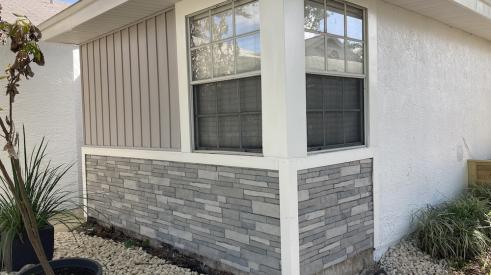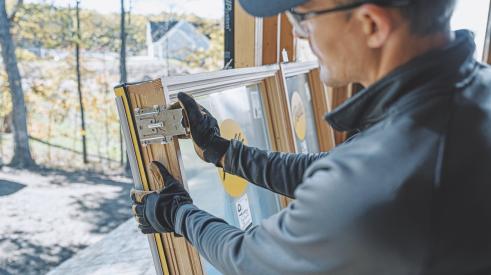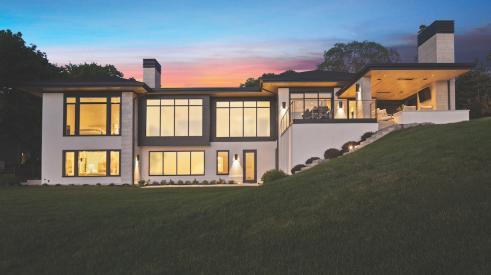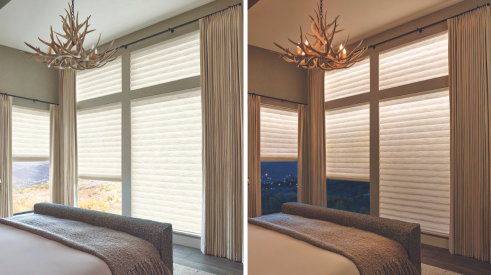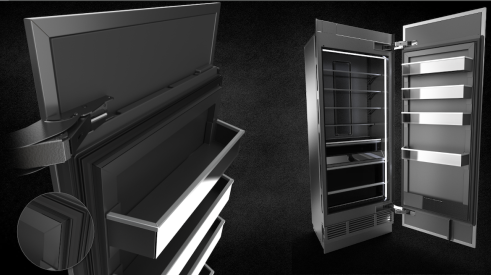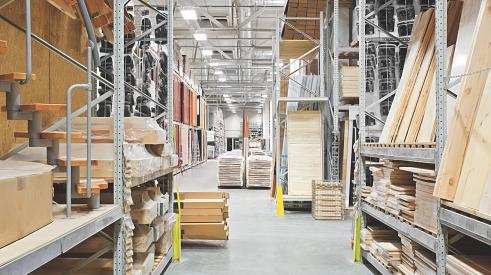Ask Barb Schiller to describe the challenges involved in remodeling her kitchen and she laughs at the understatement.
The room, in a suburban Dallas-Ft. Worth timber frame house built for her and husband Alex in 2003, entailed more than challenges. The kitchen had serious structural problems, most of them concealed. While the Schillers were largely unaware of this, they sensed that they needed an experienced remodeler to update the room.
“We know a number of fine builders,” says Schiller, “but what we really wanted was a company with a good reputation that specialized in remodeling.”
Local publicity, impressive credentials on the company website, and the endorsement of an HVAC contractor convinced the homeowners to turn to Curb Appeal Renovations, an award-winning design/build remodeler in nearby Keller, Texas.
Cluttered with heavy-looking timber posts and beams, the kitchen never measured up to the open, airy ambiance of the rest of the house. Worse, “there were signs that things were wrong,” says Schiller. “Some of the posts in the kitchen were splitting, the wood floor was buckling, and when I opened the island cabinet doors it smelled like my grandmother’s cellar.” Nevertheless “it took us years to want to put the money, stress, and time” into a
full-fledged remodel.
When Curb Appeal co-owners Rob Mathews and his wife, Robin Burrill came out for an initial meeting in November 2009, the Schillers were ready to start planning the kitchen redesign. Over the next four months, Mathews developed the design, meeting with the homeowners, considering options, fine-tuning details, and making revisions. After more than 200 hours of computer-aided design work, Mathews had a design that was beautiful and efficient.
Style and function
The existing kitchen made poor use of space, with awkward appliance placement, skimpy storage, tight circulation, a desk area that was too large, and a forest of heavy, weight-bearing beams and 8x8 posts that were failing.
Without changing the footprint, Mathews rearranged the appliances; carved out a wider pathway between the new island and perimeter walls; added a spacious, walk-in corner pantry; inserted a wine cooler and a warming drawer; and eliminated the desk to make room for a custom-crafted tea bar and the relocated refrigerator. Bonuses include a sculptural, Jatoba dining table attached to the island at table height, and an extension of the granite counter where the grandchildren can dine and play.
Schiller wanted the kitchen to be sleek and open, but still relate to the warm, timber frame styling of the rest of the house. To open up the room, Mathews concealed new, steel overhead beams and some posts. He removed other posts, most notably the one that pierced the island. He removed the window trim, washing the walls and many of the custom cabinets with a luster of buttery white paint that brightens the room and reinforces its sleek, yet traditional character.
Hidden problems
The Schillers planned to replace the kitchen’s pine floors with Jerusalem stone tiles.
“The home’s original blueprints showed a sunken 1-inch subfloor over concrete,” recalls Mathews, with the wood floor on top. When Curb Appeal’s workers began tearing out the floors to prepare for the stone, they found that there was no 1-inch subfloor over the concrete. Instead, in the kitchen the concrete slab was 3 inches lower than elsewhere in the house. The pine floor was floating over a 3-inch air space. In addition, the floor was out of level by 1 1/2 inches over a 20-foot span. This alone meant there were ceiling height variations that would wreak havoc with the custom cabinets in production.
There was more. Mathews discovered that footers and support columns did not line up on top of the slab footers. One missed the closest footer by 19 inches; another was 13 inches away from a footer, a third missed the mark by 8 inches, and another was 2 inches off.
Gaping splits up to an inch deep marred two other support columns. Curb Appeal discovered that these compression-damaged columns were failing under the load of the second floor. And long landscaping spikes were all that connected the second floor exterior walls to the side of the support beam below. It was only a matter of time before the second floor exterior wall would deflect downward more than it already had, says Mathews.
How about that musky odor coming from under the island?
“We got 5 or 6 feet into the kitchen” during subfloor tear-out, says Mathews, “and we started finding mold and water. The subfloor was black. The island had been sitting in black oil,” the slime of rot.
Why? The drain and water line for the island sink came straight out of the floor 24 inches away from the sink location. The original plumber turned the drain and water lines 90 degrees, ran them along the floor, turned them again, and shot them straight up to the sink. The island cabinetry sat directly on the pipes, and the drain line had cracked where it came out of the slab, causing “a seven-year water leak,” says Mathews.
Let’s talk about the wiring. The slab contained no cutout for electrical conduit to the island. Open wires ran everywhere between the slab and the pine flooring. During the original construction, the plumber apparently had melted several electrical lines during soldering, and repaired them with tape. Elsewhere in the room, wires had been stapled to the drywall behind cabinets. For under-cabinet lighting, the builder had used lamp cord.
“We were surprised a fire had not started,” says Burrill.
“Even the inspector was surprised at how bad this was looking,” recalls Mathews.
Making things right
Despite the mountain of bad news, the Schillers were reassured. If there were problems, they reasoned, it’s best to find and resolve them all.
As Barb Schiller says, “Naturally we had concerns, but we also had confidence that Rob could handle the full scope of difficulties presented by the ongoing discoveries and that the end result would be successful.” In fact, during the project the Schillers went on a two-week cruise, leaving Mathews in charge of the house.
“We jackhammered the floor around the island,” says Mathews, in part to repair and relocate water lines. He poured a 3-inch concrete cap over the entire kitchen floor to make it level and bring it up to the height of the other floors. Mathews cut a section out of the slab to add electrical conduit for island outlets, garbage disposer, and icemaker. Curb Appeal went on to rewire the whole kitchen.
In consultation with a Curb Appeal engineer, Mathews devised ingenious solutions to the structural support problems. Though the design called for retaining the cracked wood columns, they would be enclosed in the wall and could be reinforced without concern for aesthetics.
“We built a big splint” for each column, Mathews says, sandwiching the post between ¼-inch steel plates from floor to ceiling, drilling through and bolting the assembly together.
Already planning to install two steel I-beams in the ceiling to replace wood posts and beams, Mathews says, “I had my welder build 3/8-inch-thick steel plates to the beams, forming a big upside down T, and bolted them to the support columns that were not sitting on footings. The T extends each way on the slab to disperse the weight of the posts over 6 feet. Our new beams now carry the second floor walls.” In terms of structural support, “Once we got the steel beams up there, everything was great according to the inspector.”
Everything was great according to the homeowners too.
“We’re thrilled to be enjoying our new comfortable, thoroughly functional kitchen,” says Schiller, and relieved that all of its problems are history.
“We’ve built five homes and remodeled one, and Rob and his crews are by far the best we’ve encountered,” says Schiller. “We felt comfortable working with every one of them, and confident that they had the skills to accomplish the task.”
The Financials
Though the final cost nearly doubled the $50,000 to $75,000 budget she and husband Alex Schiller had in mind at the start, Curb Appeal Renovations maintained the Schillers’ comfort level as much as possible by regularly informing them of upcoming cost increases.
On his first visit to the house, Curb Appeal co-owner Rob Mathews offered a $75,000 to $80,000 ballpark estimate. Then he recommended a design idea the Schillers had not realized was an option — clearing out the forest of posts and beams. He made it clear that this would raise the project cost, but they loved the idea and decided that the extra outlay was worth it.
After months of design, during which Mathews priced out various options for the Schillers, he presented a final estimate of $99,196. Once the project began and Curb Appeal uncovered structural problems, Mathews calmly explained how he would resolve them and provided cost estimates.
“We did have to work through the sticker shock of what would be our project’s total expense,” recalls Barb, but the Schillers’ predominant reaction was relief that a skilled remodeler was going to fix the problems.
As for progress payments, “On a regular basis they would email a statement of what we owed,” says Barb, “with everything well itemized. Add-ons were clearly marked. [All the charges were] completely out in the open and clearly matched what was going on in the process.”
Restyled kitchen blends creative design and resourceful structural repairs
Add new comment
Related Stories
This New Tech Turns Any Countertop into a Wireless Charger
FreePower for Countertop has swept awards for its innovation—and the company claims installing it is "as straightforward as cutting a sink"
Pro's Picks: A Quick Install Composite Stone
This pro completed a high volume facelift project months ahead of schedule
Pella's New Debut Promises Faster, One-Person Window Installs
The window manufacturer promises 3.15x faster installation with its Steady Set system
Marvin Releases Switchable Privacy Glass Window
The privacy glass windows can be purchased from Marvin's Direct Glaze windows
Innovative Products: Window Shades That Create Natural Light
Wait, shouldn't window shades keep light out?
New Insulation Innovation Reshapes Our Thinking of Refrigeration
Whirlpool Corporation's latest innovation allows refrigerators to do more and be more
Innovative Products: A Whole-Home Energy Monitoring System
Homeowners can control their lighting, load control, and EV charging through one app
Pro's Picks: A Paperless Note-Taking Tablet
This remodeler recommends a tablet that makes note-taking and document organization easier
Building Materials Show Stability in 2023
Although supply chain bottlenecks have eased in recent months, shortages of some key materials persist.





